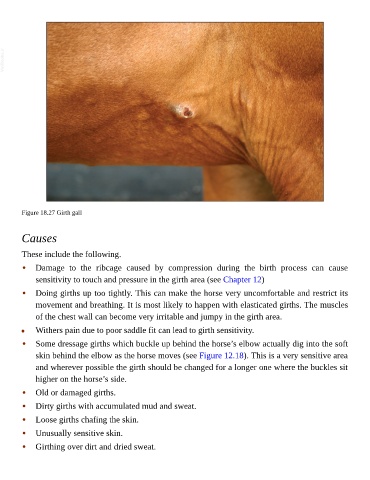Page 875 - The Veterinary Care of the Horse
P. 875
VetBooks.ir
Figure 18.27 Girth gall
Causes
These include the following.
• Damage to the ribcage caused by compression during the birth process can cause
sensitivity to touch and pressure in the girth area (see Chapter 12)
• Doing girths up too tightly. This can make the horse very uncomfortable and restrict its
movement and breathing. It is most likely to happen with elasticated girths. The muscles
of the chest wall can become very irritable and jumpy in the girth area.
• Withers pain due to poor saddle fit can lead to girth sensitivity.
• Some dressage girths which buckle up behind the horse’s elbow actually dig into the soft
skin behind the elbow as the horse moves (see Figure 12.18). This is a very sensitive area
and wherever possible the girth should be changed for a longer one where the buckles sit
higher on the horse’s side.
• Old or damaged girths.
• Dirty girths with accumulated mud and sweat.
• Loose girths chafing the skin.
• Unusually sensitive skin.
• Girthing over dirt and dried sweat.

